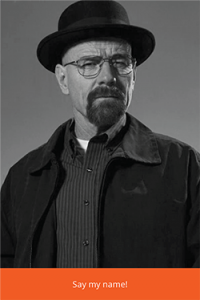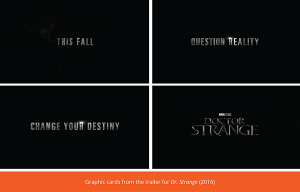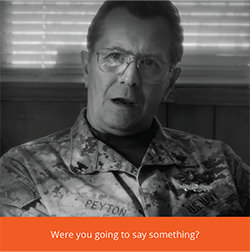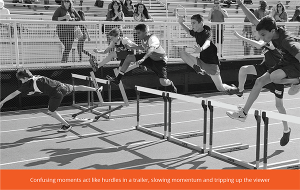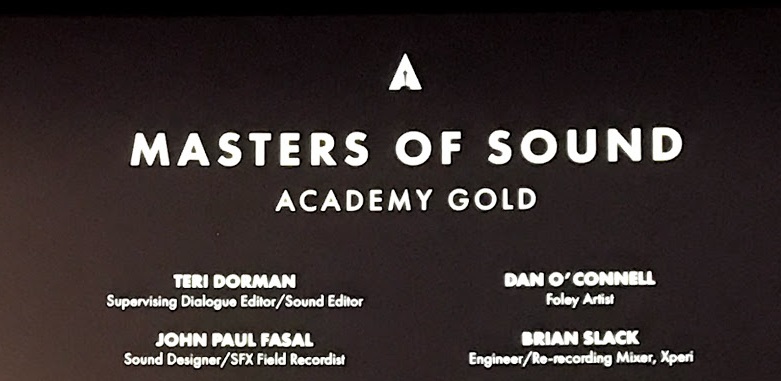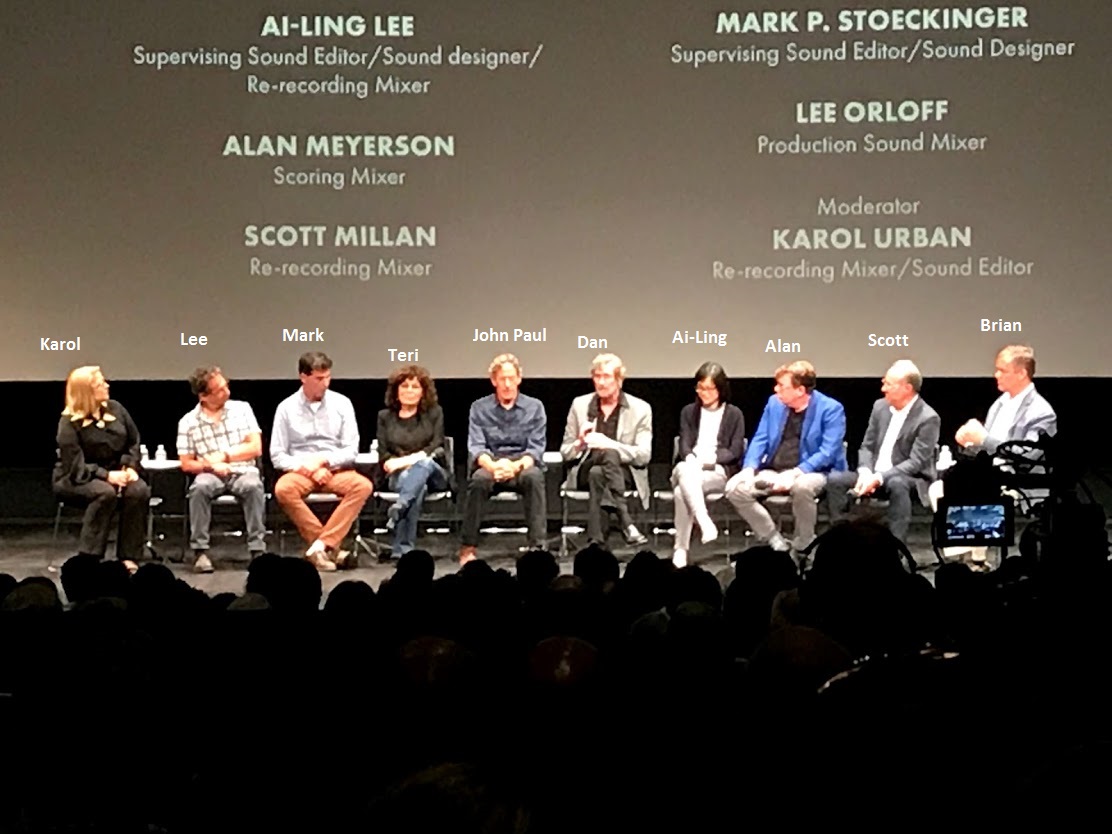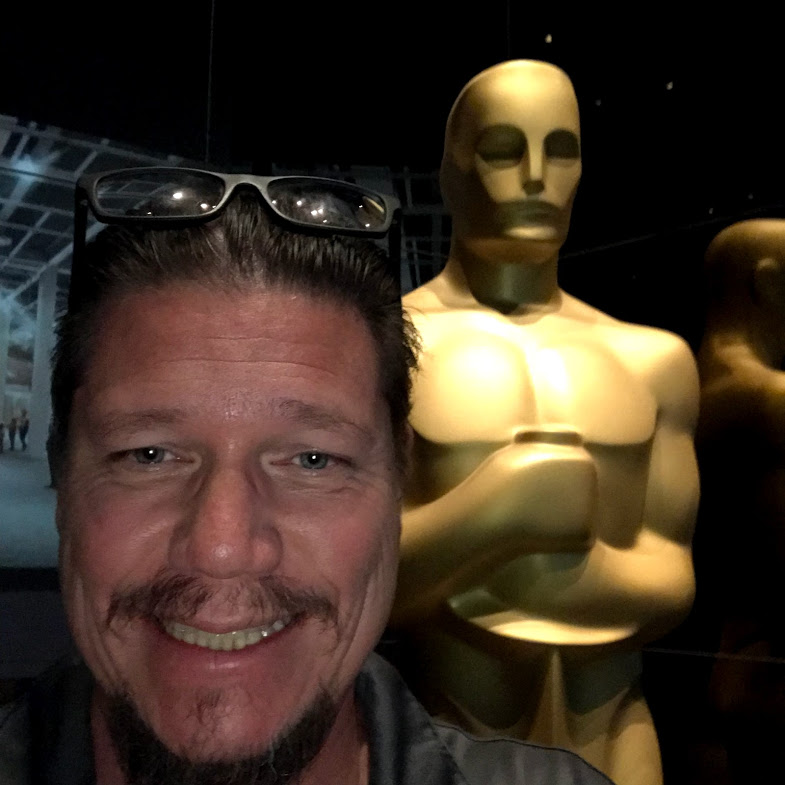On March 3rd, 2018, I attended my 10th ACE Invisible Art Visible Artist event. Each year the line to get in seems longer and longer. I think has a lot to do with the fact that ACE is steadfast in their efforts to help our craft in being recognized in the world of film.
IAVA (Invisible Art/Visible Artist) is the panel where all of the year’s Oscar nominated editors come together and speak about how they got into the craft and what it was like to work on their particular film that has been nominated. Some years not all of the editors can make it but this year we were lucky in that all of the nominees were present. Although, Tatiana Riegel had to leave early because she had to attend the Independent Spirit Awards*, where her film I, Tonya was nominated in three categories, including Film Editing, which she won.
The editors and movies nominated for an Academy award in Best Achievement in Film Editing were Tatiana S. Riegel, ACE for I, Tonya; Jonathan Amos, ACE for Baby Driver; Paul Machliss, ACE for Baby Driver; Lee Smith, ACE for Dunkirk; Sidney Wolinsky, ACE for The Shape of Water; and Jon Gregory, ACE for Three Billboards Outside Ebbing, Missouri.
The MC of the event was perennial Alan Heim, 1980 winner of the Best Film Editing Oscar for the 1979 film, All That Jazz, and Vice-President of the American Cinema Editors and President of the Motion Picture Editors Guild.
There are a myriad of ways that people get to editing as a career. Each year we hear a sample of how the best of the best came to arrive at their positions.
Ms. Riegel’s story was “edited” down. After graduating college with a political science degree, Howard Smith gave her, her first job on the film River’s Edge. She credited him with teaching her a lot. “And I’ve been working ever since.”
Jonathan Amos’s story wasn’t quite so short however. He taught himself the Avid and eventually traveled the world making documentaries, determined to edit any possible way he could. During that time, he was offered an assistant job at Ealing Studios on a TV show where Edgar Wright happened to be shooting Shaun of the Dead. Jonathan got to meet Chris Dickens, whom would go on to win the Oscar for editing Slumdog Millionare. Chris and Edgar reached out to Jonathan to help on Hot Fuzz and then Scott Pilgrim vs. the World, where he reached his dream of becoming a film editor.
Regarding advice for new people striving to become editors, he added, “desire, courage, and luck. That’s what I say to anyone that comes into the cutting room, ‘you’ve got to apply yourself so much’. And I can tell the assistants that are going to make it because they want it, they’re so hungry…. And that was me back then. I see that hunger and yeah, that’s what you gotta do.”
Paul Machliss came from Australia and knew he wanted to be in films from the age of 5 or 6, when he accompanied his father, a producer, to an editing session one day and fell in love. “Whatever is going on in this room, I want to be a part of it!”
He went from an internship to a job at a television station, just prior to going to University and never went back. Although he jokes that Uni’s still on hold, “just in case this doesn’t sort of work out!” A chance job opportunity to demo some Sony gear at IBC, prompted him to extend his trip further to London because he was a big fan of British comedy and wanted to be a part of that world. He literally knocked on doors until he landed an editor job. Eventually, he got on the show Spaced, where he worked with Edgar Wright on-lining the first season. He then wanted to freelance and as Chris Dickens wasn’t able to do the second “series”, Edgar hired him for it. He now had really reached his dream of working in England on British comedy shows. In 2009, at Edgar’s behest, he joined him and his friend Jonathan Amos on Scott Pilgrim.
Lee Smith began working in film in 1976, his family was in the industry and he “just didn’t have a choice!”, he jokes. His father was an optical effects technician at a film lab in Australia and his uncle co-owned a lab and his auntie was a neg matcher and his brother was a camera man.
In an uncertain time for film in Australia, his father helped him find a position. It was hard but he was finally able to get a PA job at Film Production Services in Sidney, where he met Peter Weir. After some time he eventually became the assistant editor on The Year of Living Dangerously. Later. with Master and Commander, Lee was nominated for an Oscar in film editing. After that he got an agent and connected with American Cinema Editors, which lead to working with Christopher Nolan. Working with Nolan, Smith received his second Oscar nomination for editing The Dark Night in 2009. This is where I first saw Smith at my first IAVA attendance and when I was lucky enough to be an assistant editor on the DVD production of that IAVA show.
Sidney Wolinsky, after college, went to film school at San Francisco State, where he got his Masters in film. Moving to Los Angeles, Sidney initially thought he’d be a DP but decided “editing was more about telling the story”. Doing miscellaneous jobs in LA, he even worked on a “That’s Entertainment with animal actors” show out of Burbank, a Fred Weintraub and Paul Heller show. Eventually, he got on with Richard Marx on Oliver Stone’s first picture, The Hand. Sidney did a lot of cutting with “Ritchie” including Pennies from Heaven. He then passed on assistant jobs in pursuit of editing jobs. His first editing job was on Gary Marshall’s first film, Young Doctors in Love. He edited The Sopranos, all of the seasons, then more TV and movies including a series called The Strain, written by Guillermo del Toro. After returning to edit some more for television, Guillermo called him to work on The Shape of Water.
Born in India, Jon Gregory started going to the cinema as a kid. When they moved to England, cinema still held his attention. In fact, his schooling suffered because of it. While people were studying for exams, he was slipping off to watch movies and writing fan mail to the likes of Bridget Bardot and Lana Turner! He wanted nothing else but to help make movies.
Fortunately, he found an ad where the BBC was looking for hands to move set scenery. The BBC in the 60′s was just the training ground that Jon needed to learn more about film.
Studying the studio camera switching, he realized he wanted to become an editor. BBC would allow him the means to move over to assistant editor, then editor. He worked with Les Blair and also met Les’ friend Mike Lee. Jon edited films for both of them outside of the BBC and just continued on from there. “If that’s all you want to do and there’s nothing else, it’s surprising how you, how you keep going. ‘Cause if there’s nothing else, you’ve got to do it, regardless and that’s it!”
Besides the great inspiration one gets from listening to their journeys, each editor brings a clip from their nominated film to watch and talk about.
Tatiana’s clip from I, Tanya was one from the film where the character Tanya Harding is performing a skating routine, then gets less than desirable scores and then cuts to her and her mom eating dinner at home where they get into a fight and then cuts to an interview shot. This sequence covers three different aspects of the editing that were a marvel to watch. Tatiana talked about the subtleties that each section showed and why she loved editing each. “The skating in the film was really fun to work on.” The skating sequences were cut to fit the emotion of the character as she changes throughout the film.
Tatiana then described how she enjoyed cutting the dialogue and the character pieces of the film, they “are equally as challenging if not more so, I think. There are subtleties, there are little eye movements… taking the time and the pause to figure out how to make this work…. The film is always dancing back and forth between this very emotional, sad, tragic story — and just the absurdity of the story — the craziness that brings in this whole comedy element that is fun.”
They showed two clips from Baby Driver. The second clip of Baby Driver shown was a diner scene with a lot of tension and danger building up. The pace of that clip allowed for actors’ performances to breathe and Paul explained how he liked the process of that as well as the fast punctuated pace of chase sequences.
Regarding the chase sequence, Mr. Heim asked about choices and available angles considering the music and animatics were already set. Paul Machliss talked about the rigidity they did face for the sequence but Jonathan Amos positively glowed when recounting, “that was probably the best editing month of my life! I had a big smile on my face, every single day”.
Both Jonathan and Paul discussed how they did work out fitting pieces in. Paul frantically described the thought processes involved,”The track is the track. You just can’t take three frames out of Bellbottoms, ’cause then the music doesn’t…. Cars. Cars really don’t crash when you crash them practically, they don’t know they’ve only got a second and a half to tumble and to sort of finish…. I liken it to one of those 18th century clocks that you just see the hand slowly turn, but you open it up and there’s dozens of little cogs all working within each other. That’s exactly what this sequence was doing. You couldn’t ‘just cut it to music’ you had to think of everything!”
Alan asked, “How do you edit together?”
Paul Machliss, “He marks the in points. I mark the out points!”
Jonathan Amos, “That’s an old joke. He always tells that joke!”
For the Dunkirk clip, it was a sequence of a battle in the water, with planes bearing down on sailors and ships. Nolan uses a lot of practical effects in his shots and Lee explains, Every shot is “in-camera” with very little CGI added. There was so much in-camera that he didn’t have to worry about the special effects.
There wasn’t much dialogue in the film. Lee added, “It was kind of like editing, for me, for the first time, like a silent movie, if you will. So, no one’s narrating it, there’s no back story, you’re basically from the first frames of the film you’re dropped into the action. Chris wanted… you to experience what it was like to be one of those characters.”
Sidney Wolinsky, ACE showed a sequence leading up to and the dialogue scene where the girl who can’t speak is signing and another character speaks the signs, AKA translating the signing for the audience. The writing of the scene does this so that we can have quicker dialogue pace at this point of the movie.
From the audience’s perspective, one of the charming things about Mr. Wolinsky is that he’s so matter of fact and direct in his answers. Sidney deadpans,”Once I get out of the master, the challenge of cutting it is to time his words to her signing and choose the take where he… I think I used all the dialogue from his close-up, over her, because it was the most emotive reading. But apart from that, that was the only challenge. It’s really not that difficult to do that.” The audience laughs along.
“What about the rest of the movie which is so complex…? How did that all come together?”
“…It was, you know… We cut the scenes they scripted and put them all together, basically. I mean, what can I say!” The audience laughs even more.
The last clip of the day from Three Billboards was the scene where the church pastor visits the lead character Mildred at her home and she explains why his opinion doesn’t count because he’s “joined the gang!”
Jon Gregory walked us through the minute details and choices filtered by his long history of film story that were required, for even such a “simple scene”.
The talk turned to whether or not doing dailies on a big screen was a part of their lives. The overall desire was that they’d all like to do them but costs usually prohibit it. These days, with electronic transmission of dailies to individuals, group viewing has come out of favor. Nevertheless, in our new age, technology does provide advances to filmmaking such as editing which can now occur on set.
There was only time for a couple audience questions and this year I finally had one to write down and (part of) it was coincidentally asked today. “With AE’s having to do so much these days, should the Union bring back Apprenticeships in the editing room?”
That question received much applause from the audience and Alan probed the panel, “That’s an excellent idea. How do you guys feel about that? And where would they go? What will you do with an apprentice in the cutting room now with.. we don’t have so much film to deal with… it’s all digital…”
Lee: “I think an apprentice is just a natural progression into assisting, a natural progression into editing. So, yeah. Bring ‘em back. The more the merrier. We call them PA’s now. So why don’t we call them apprentices? That would be better… And they’re in the Union. That would be really good.”
Jon Gregory: “I agree. I agree. I mean, with what the assistant does and the technical process, especially… Well you see, it depends on the kinds of films you work on but budget wise so often we don’t have VFX editors and all the rest of it so the assistant is doing everything. And having to send the lists here and lists… and there’s so much that I wish we could just move on to somebody else. and just concentrate, ’cause I think the assistant… I just love to involve them more into the actual film, their opinions and if you value their judgements, that’s where… obviously the other bits are important as well but sometimes you can’t do that because they gotta do this and they gotta have a list sent to somebody else and they gotta do something else..
Alan: “That was also part of the learning process, how to develop into becoming an editor. And we miss that I think.”
As with every year, this panel was very inspirational. We are privileged to be able to see and hear the artists behind the invisible art of editing.
ACE continues to make editing visible to the world. In that vein, this year the event was streamed live by Avid on their Facebook page. It can be seen here: https://www.facebook.com/Avid/videos/10155399503967525/?t=931
– Eric Francis Harnden
* It is because of the efforts of ACE and MPEG that the Independent Spirit Awards added the category of Editing in 2014.
